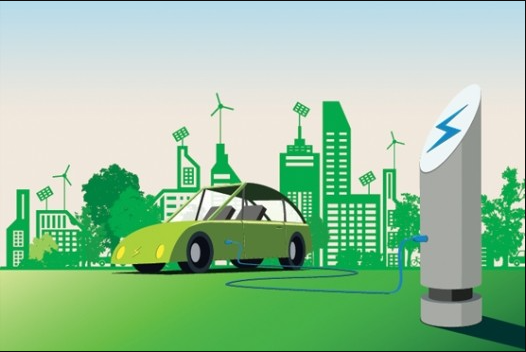
Driving the Future: How Electric Vehicles Are Transforming the Auto Industry
The automotive industry is undergoing a monumental transformation, driven by the rise of electric vehicles (EVs). As the world grapples with climate change, resource scarcity, and urban congestion, EVs have emerged as a key solution to some of the most pressing challenges of our time. From reducing carbon emissions to reshaping consumer preferences and redefining manufacturing practices, electric vehicles are not only changing how we drive—they’re redefining the future of transportation.
The Rise of Electric Vehicles
Electric vehicles are not a new invention; the first electric cars appeared in the late 19th century. However, it wasn’t until the 21st century that EVs gained significant traction, thanks to technological advancements, growing environmental concerns, and supportive government policies. Companies like Tesla, Nissan, and Chevrolet have played a significant role in popularizing EVs, with Tesla, in particular, setting new standards for performance, design, and infrastructure.
Today, nearly every major automaker has joined the EV revolution, with brands such as Ford, Volkswagen, and General Motors investing billions in electric mobility. As of the mid-2020s, EV adoption is accelerating at an unprecedented rate, driven by consumer demand, global emissions targets, and the promise of a cleaner, smarter future.
Environmental Impact and Sustainability
One of the most compelling arguments for the transition to electric vehicles is their positive impact on the environment. Traditional internal combustion engine (ICE) vehicles are major contributors to air pollution and greenhouse gas emissions. EVs, on the other hand, produce zero tailpipe emissions, significantly reducing their environmental footprint.
While the production of EV batteries does have environmental implications, including the mining of lithium, cobalt, and other rare-earth elements, lifecycle analyses show that EVs still produce fewer emissions overall compared to their gasoline-powered counterparts. Moreover, the industry is investing heavily in improving battery recycling and sustainable sourcing practices.
Additionally, as the power grid becomes greener through the integration of renewable energy sources like solar and wind, the environmental benefits of EVs will only increase, making them a cornerstone of a sustainable transportation ecosystem.
Technological Advancements
The shift toward electric vehicles has accelerated technological innovation across the automotive sector. EVs are often equipped with cutting-edge features, including:
- Advanced driver-assistance systems (ADAS)
- Over-the-air software updates
- Smart infotainment systems
- Regenerative braking
- Enhanced vehicle-to-grid (V2G) capabilities
Battery technology, in particular, is advancing rapidly. Innovations in solid-state batteries, increased energy density, and faster charging times are addressing some of the major hurdles to EV adoption, such as range anxiety and long charging durations. As these technologies continue to mature, EVs are becoming more practical and appealing for a broader range of consumers.
Economic Implications
Electric vehicles are also reshaping the economics of the auto industry. While EVs have traditionally carried a higher upfront cost than ICE vehicles, falling battery prices and government incentives are narrowing this gap. In many cases, the total cost of ownership for an EV—factoring in fuel savings, lower maintenance costs, and tax incentives—is now lower than that of a comparable gasoline-powered vehicle.
Automakers are rethinking their business models to adapt to the EV era. Subscription services, direct-to-consumer sales, and software-driven revenue streams are becoming increasingly common. Tesla, for instance, has demonstrated how a car company can double as a tech company, generating income from software features, autonomous driving packages, and energy products.
Infrastructure Development
Widespread EV adoption hinges on robust charging infrastructure. Governments and private companies alike are investing heavily in building out networks of fast-charging stations. In urban areas, residential and workplace charging solutions are becoming standard, while highways are being equipped with ultra-fast chargers to facilitate long-distance travel.
Innovations such as wireless charging, solar-powered charging stations, and vehicle-to-home (V2H) systems are also enhancing the convenience and appeal of EVs. As infrastructure improves, range anxiety will continue to diminish, further accelerating the shift away from fossil fuels.
Impact on Traditional Automotive Supply Chains
The rise of EVs is disrupting traditional automotive supply chains. Electric vehicles require fewer moving parts than ICE vehicles, which simplifies assembly and reduces the need for certain components such as spark plugs, exhaust systems, and oil filters. This shift is forcing suppliers and manufacturers to pivot toward new technologies and retrain their workforce.
Automakers are increasingly integrating vertically, bringing battery production and software development in-house to maintain control over critical components. This trend is also fostering new partnerships between tech companies and carmakers, creating a more interconnected and agile industry ecosystem.
The Road Ahead: Challenges and Opportunities
Despite the progress, the transition to electric vehicles is not without challenges. Key concerns include:
- Battery production and recycling: Ensuring sustainable and ethical sourcing of raw materials.
- Grid capacity: Preparing energy grids for increased demand.
- Consumer education: Addressing misconceptions and promoting awareness.
- Equity and access: Making EVs affordable and accessible to all income groups.
However, these challenges also present opportunities for innovation and leadership. As new technologies emerge and economies of scale are achieved, many of these barriers will diminish. Governments, businesses, and consumers all have a role to play in supporting this transformative shift.
Global Implications
The EV revolution is a global phenomenon. Countries like Norway and China are leading the way in adoption, driven by aggressive policies and strong incentives. In the U.S., federal and state governments are ramping up efforts to support EV infrastructure and development through grants, tax credits, and regulatory frameworks.
Developing nations are also exploring electric mobility as a way to reduce urban pollution and dependence on imported oil. In many cases, EVs offer a more sustainable and cost-effective solution for growing transportation needs.
Conclusion
Electric vehicles are more than just a trend; they represent a fundamental shift in how we think about transportation, energy, and the environment. By reducing emissions, spurring innovation, and reshaping the global auto industry, EVs are driving the future in every sense of the word.
As technology continues to evolve and infrastructure catches up, the promise of a cleaner, smarter, and more sustainable transportation system is becoming a reality. The road ahead is electric, and the journey has only just begun.
